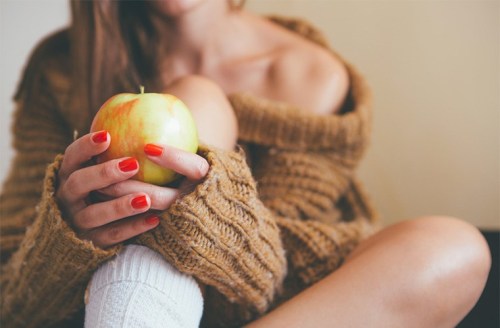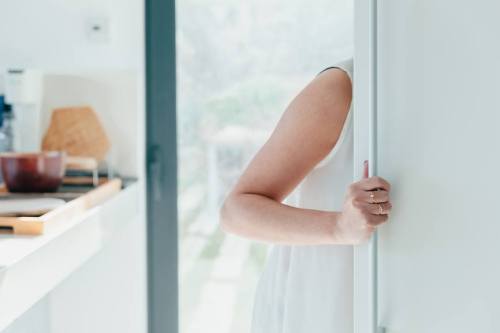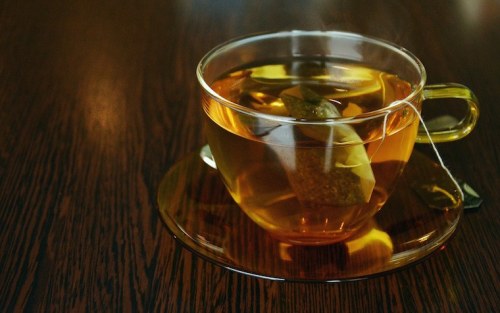Our editors independently select these products. Making a purchase through our links may earn Well+Good a commission
These surprising foods could be making you bloated
The Doctors host Dr. Travis Stork, MD, explains what FODMAP foods are and how they're sneaky sources of bloat.

Gisele may swear by the 80/20 diet and Blake Lively is convinced we should all be cutting out soy, but the eating plan that people have been buzzing about the most recently doesn’t need a big-name endorsement to convince sensitive eaters to adopt it as their own.
It’s the low-FODMAP diet, which is for people who have problems digesting short-chain carbohydrates. And turns out, there are a lot of them: 45 million Americans, in fact, the number estimated to be grappling with GI issues, such as irritable bowel syndrome (IBS) or regularly experiencing boats of bloat.
High-FODMAP foods are found in every food group—including healthy ones, like mushrooms, watermelon, and (gasp!) cashews.
FODMAP stands for Fermentable Oligosaccharides, Disaccharides, Monosaccharides, and Polyols—all things that people following this program would want to cut out. The bad news? High-FODMAP foods are found in every food group—including healthy ones, like mushrooms and (gasp!) cashews—making it tricky to keep track of what should be avoided to stay bloat-free.
To help you identify trigger foods (because hey, you’ve got enough other things on your mind), Travis Stork, MD, host of The Doctors and author of The Doctor’s Diet, reveals some sneaky FODMAP sources you might not suspect.
Keep reading for surprising FODMAP foods that could be making you bloated.

First, one major thing to keep in mind
Before you completely banish all FODMAP foods from your life for good, Dr. Stork says it’s best to first try an elimination diet, phasing out each of the six FODMAP subgroups one at a time before then adding them back in. This way you can really pinpoint which groups are a trigger for you. (You definitely don’t want to cut out watermelon if you don’t have to.)
Something else Dr. Stork says to remember: Symptoms from eating FODMAP foods (AKA annoying stomach issues) are cumulative. That is to say, eating a small amount of a high-FODMAP ingredient probably won’t cause major problems, but if you eat a little of several different ones, that’s when you’ll start feeling some discomfort.
“If you go to a restaurant and there’s a little garlic in your salad that you didn’t think to ask the waiter about, that’s probably going to be okay,” he says. “But again, it’s important to remember that everyone is different and can tolerate different amounts.”

Fruits and veggies with fructose
Apples, pears, peaches, asparagus, and artichokes are all good for you, but they also all have excess fructose—firmly earning themselves a high-FODMAP label. “People have heard ‘an apple a day keeps the doctor away’ for so long, but for people with GI issues, apples can cause more harm than good,” Dr. Stork says.
Other culprits: garlic and onion, which are common ingredients in cooking sauces. Since most chefs and waiters have no idea what FODMAP foods are, it’s on you to ask whether anything you’re ordering might include one of these sneaky sources. “When it comes to sticking to a low FODMAP diet, the most important part is education so that you know what to ask the waiter,” Dr. Stork says.

Beans
If you’re vegan or vegetarian, chances are protein-rich sources like black beans, soy beans, and red kidney beans make up a decent portion of your diet. But it turns out that filling up on them can make you bloated if they’re one of your FODMAP triggers.
Before you chuck out that tub of hummus, Dr. Stork notes that you’re not out of the legume game entirely. “Drained chickpeas or lentils is a better option for you,” he recommends.

Chamomile tea
If you have a stomachache, your first instinct might be to trade in your coffee for a calming cup of chamomile tea—but the soothing favorite is an unexpected FODMAP food. (Fennel and oolong tea are, too.) Coffee, black tea, green tea, and peppermint tea all make the safe list—so you don’t have to give up matcha anytime soon.
“If you’re just starting out with the low-FODMAP diet, the best thing you can do is keep a list of high- and low-FODMAP foods with you,” Dr. Stork says. (Don’t worry, Well+Good’s got you covered with this handy FODMAP list.) The good news, he says, is that there is always a substitute that delivers on both taste and nutrition. And he predicts that living a low-FODMAP lifestyle will only get easier as more people learn what it is. (A sign of things to come: The first grab-and-go product specifically marketed as low-FODMAP recently hit supermarket shelves.)
All of this may seem like more trouble than it’s worth, but Dr. Stork says the majority of people who stick to it see a change within days. And never having to deal with bloat again? That’s seriously life-changing.
Another buzzword that you might be hearing about a lot: leaky gut—here’s how to know if you have it. Your bloating issues might have a surprising (doctor-approved) culprit: birth control pills.
Sign Up for Our Daily Newsletter
Get all the latest in wellness, trends, food, fitness, beauty, and more delivered right to your inbox.
Got it, you've been added to our email list.










